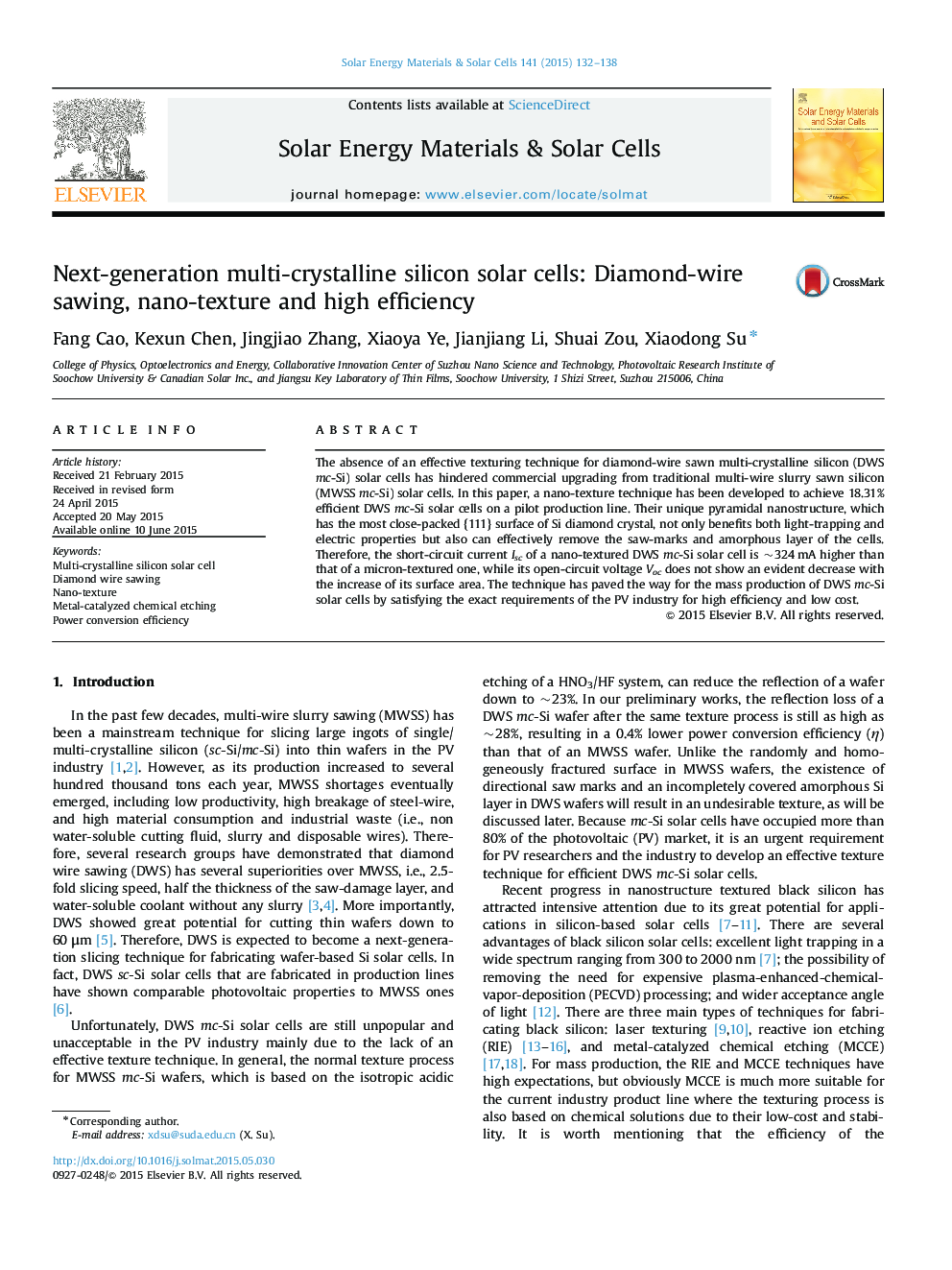| Article ID | Journal | Published Year | Pages | File Type |
|---|---|---|---|---|
| 77733 | Solar Energy Materials and Solar Cells | 2015 | 7 Pages |
•Saw marks and amorphous layer in DWS mc-Si wafer can be removed by a MCCE process.•8.31%-efficient DWS mc-Si cell with pyramidal nanostructure texture was achieved.•Light trapping mechanism of DWS mc-Si wafer has been simulated and discussed.•Nano-texture process for DWS mc-Si cell has been verified in a pilot product line.
The absence of an effective texturing technique for diamond-wire sawn multi-crystalline silicon (DWS mc-Si) solar cells has hindered commercial upgrading from traditional multi-wire slurry sawn silicon (MWSS mc-Si) solar cells. In this paper, a nano-texture technique has been developed to achieve 18.31% efficient DWS mc-Si solar cells on a pilot production line. Their unique pyramidal nanostructure, which has the most close-packed {111} surface of Si diamond crystal, not only benefits both light-trapping and electric properties but also can effectively remove the saw-marks and amorphous layer of the cells. Therefore, the short-circuit current Isc of a nano-textured DWS mc-Si solar cell is ~324 mA higher than that of a micron-textured one, while its open-circuit voltage Voc does not show an evident decrease with the increase of its surface area. The technique has paved the way for the mass production of DWS mc-Si solar cells by satisfying the exact requirements of the PV industry for high efficiency and low cost.
